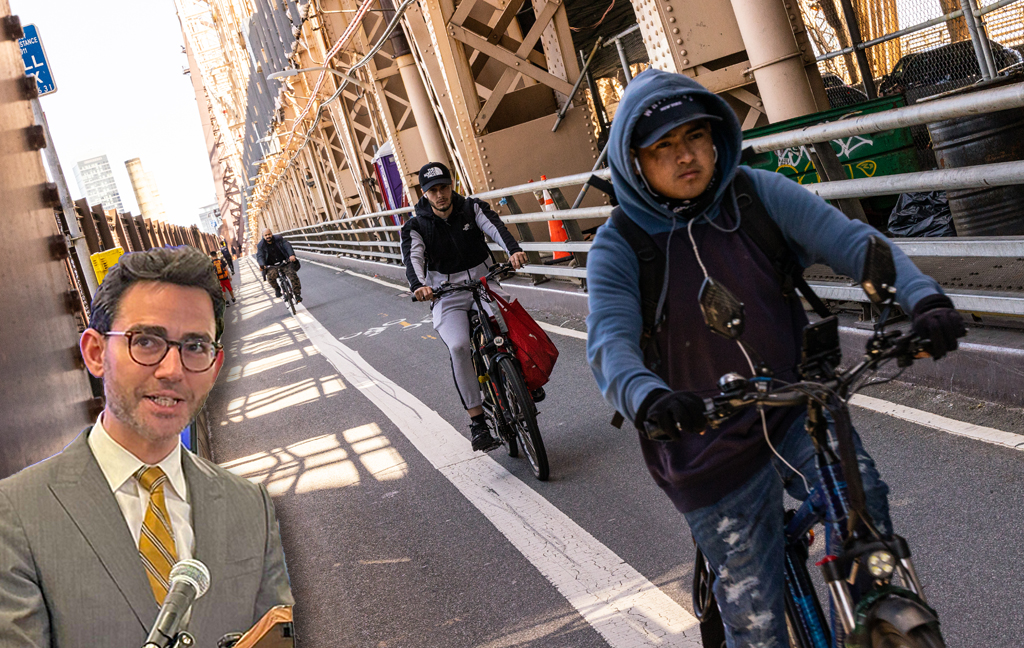 Chris Leinberger discusses strategies to develop walkable urban spaces in the United States. Photo: Mathew Katz
Chris Leinberger discusses strategies to develop walkable urban spaces in the United States. Photo: Mathew KatzIf the American Dream of the Baby Boomers was all about being able to have a car and a house in suburbia, the new American Dream is having the choice between living in drivable suburban places and walkable urban ones.
That's according to Chris Leinberger, a land use strategist at the Brookings Institution, who spoke today at the Walk21 Conference. There's a simple supply-and-demand argument, Leinberger says, for creating more walkable urban space: About the the same number of people want to live in a pedestrian-friendly environment as those who want to live in a drivable suburban one, but the supply of housing in walkable urban areas makes up only 5 to 10 percent of housing nationwide. As millions of New Yorkers know, that leads to exceedingly high prices.
But that's not always a bad thing. Sarah Gaventa, Director of CABE Space in the U.K., said that her organization managed to prove that walkability adds value to nearby property and attracts investment. CABE developed a scale to rate pedestrian-friendliness called the Pedestrian Environment Rating System (PERS). For every point on the PERS scale, neighborhoods saw a 5.2 percent increase in residential prices and a 4.9 percent increase in retail rent. Attracting more retail and consumers also means more jobs, though there should be incentives to maintain local businesses and affordable housing, Gaventa said. Having proof that making a space more pedestrian friendly will add value to it is a great way to convince those in power that change -- and a more comprehensive strategy -- is needed.
That strategy, Leinberger said, should be the development of more places where residents' everyday needs are within a maximum of 3,000 feet. We've largely run out of room to build more in the busiest urban areas -- it would be difficult for Manhattan to get much denser than it already is -- so the solution to fill that demand for pedestrian-centric space is to transform outlying areas, such as suburbs, into walkable places.
It's not impossible. It's already happened in the D.C. metro area, where 70 percent of walkable areas are outside the city core. D.C. has the greatest amount of walkable urban places per capita in the country, Leinberger said. New York's metropolitan area, with our car-crazy suburbs and exurbs, comes in at tenth. By building up these new walkable places, we could kickstart transformative projects to give a major boost to our recession-weary economy over the next few decades, not to mention re-invigorate our collapsed housing market.
Having more walkable places also makes sense on a personal financial level. According to Leinberger's data, car-friendly suburban households spend anywhere from 25 to 40 percent of their income on transportation, whereas urban households spend only about 9 percent. That extra money can go into paying for housing, or even -- as Leinberger puts it -- that most un-American of things: savings.





